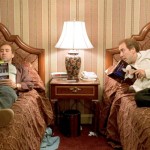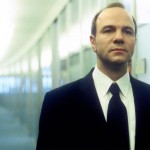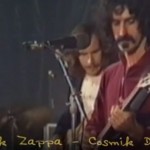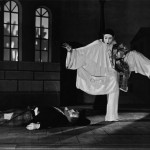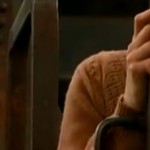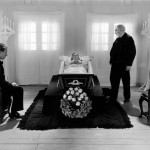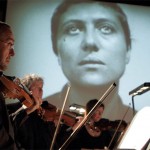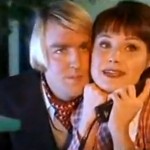
By John Patrick Diggins
For Diggins, the first problem facing any historian of the American Left is one of basic terminology. “The characteristics most often used to define the Left,” he writes, “the demand for change; political ideals like justice, equality, and democracy; anticapitalism and the tactic of dissent; the mentalities of rationalism and ideology—are either so broad as to include many other political elements or so narrow as to apply to one American Left and not to others” (39). In the opening chapter of The Rise and Fall of the American Left, Diggins briefly examines each of these assumed traits, exposing the contradictions inherent in each. Finally, he implies that the Left can most appropriately be defined by its admittedly naïve faith in the radical perfectibility of society, or, even more succinctly, by the gap that exists between these two questions: “What is real? What is possible?” (42).
Of particular interest to Diggins is the strange partnership of intellectuals and the working class that has characterized so much of the history of the American Left. He traces the origins of that partnership to the Pragmatists and to Karl Marx. From people like William James and John Dewey the Left inherited a brand of existential idealism that turned Man into a force capable of “willing” its influence on history. From Marx came a faith in the collective power of the proletariat and the theory that would direct their “inevitable” triumph over capitalism. The partnership, however, has always been a site of conflict and paradox. “By and large,” Diggins writes, “American socialism was a movement not of but on behalf of the working class. Although it presumed to speak for the workers and to articulate their needs, the doctrines and tactics had been developed by intellectuals and party leaders” (90).
Diggins divides his history into four phases: the Lyrical Left, the Old Left, the New Left, and the Academic Left. The first phase (like the penultimate) was born largely in opposition to all that preceded it. “The young intellectuals,” Diggins argues, “cheerfully presided over the death of the ‘genteel tradition’ as they attacked its Victorian standards, its polite manners and haut-bourgeois tastes, its Puritan heritage and decorous Brahmin literature, and, above all, its condescending certainty that it had found ultimate truth and absolute value” (97). The Lyrical Left grew up from the pre-WWI years when the Socialist Party carried considerable weight in popular American politics, most notably in the figurehead of Eugene Debs. Diggins devotes his energies to profiles of Debs and other important leaders of the movement: John Reed, Emma Goldman, Daniel DeLeon, Big Bill Haywood, along with many of the artists and intellectuals who congregated in Greenwich Village and Harlem, including Mabel Dodge, Langston Hughes, W.E.B. DuBois, Countee Cullen, and Jean Toomer.
I’m most fascinated by Max Eastman, a novelist, poet, feminist, and editor of Masses, who wrestled constantly with the problems of idealism and pragmatism. When, in the early-1920s, many leftist intellectuals in America became disillusioned by Lenin’s turn to the right and by Stalin’s succession, Eastman turned to a practical analysis of Marxism. “The crux of Eastman’s critique of dialectical materialism,” writes Diggins, “was that belief in the inevitability of communism was a dubious scientific proposition. That capitalism morally ‘ought’ to collapse was no basis for predicting that it would” (123). Decades later some in the New Left would return to Eastman’s analysis, but in the 1920s it was powerless to overcome the combined force of heated domestic pressure (inspired in part by the SP’s official anti-war stance) and the violent suppression of Trotsky and his supporters in the Soviet Union. The Lyrical Left collapsed soon after it began.
The Old Left should have been born of the widespread proletariat revolt that followed the “inevitable” (orthodox Marxism would argue) collapse of the stock market in 1929, except that no such revolt occurred. Instead, the American worker often blamed himself for his own personal failings. “The extent of this psychic wound,” writes Diggins, “indicates how much America’s working class had absorbed the values of capitalist individualism” (146). The lingering effects of the Great Depression did, however, incite a growing interest in the American Communist Party, but its message and political influence were quickly fractured and diluted by a host of foreign and domestic forces. In the Soviet Union, Stalin’s purges, the Moscow Trials, and, in 1939, the forging of a non-aggression pact with Nazi Germany deflated the Old Left’s faith in the Comintern and awakened leftist intellectuals to their own naivety. At home, the Popular Front combined with Roosevelt’s New Deal diplomacy to further liberalize socialism. Diggins writes:
Roosevelt’s ability to steer a middle course between capitalist exploitation and socialist expropriation, while at the same time preserving traditional democratic institutions, seemed more attractive to disillusioned radicals who found a new respect for the politics of moderations as they watched the politics of extremism in Germany and Russia. (189)
With America’s victory over Fascism in Europe, the lowering of American employment due to the booming postwar economy, and the Soviet occupation of Eastern Europe, the Old Left’s traditional tropes were destabilized. As Diggins notes, the Left was forced to throw off Marxist orthodoxy and admit “that democratic freedom and one-party dictatorships are incompatible” (216). The New York Intellectuals and the left-leaning journals of the day—Partisan Review, Commentary, Dissent—suddenly experienced a strange and surprising patriotism (or something like it). Leftist philosophers, historians, economists, theologians, and politicians were all left to explain America’s “exceptionalism,” its unique ability to withstand the pressures of history that Marx had predicted. Instead of collapsing under the weight of proletariat revolt, America’s economy thrived, sending workers into the post-industrial age of conspicuous consumption and suburban alienation.
Diggins’s chapter on the New Left opens with an interesting epigraph from Stephen Spender:
Nothing is clearer to a later generation than the naivety of an earlier one, just as nothing is clearer to the earlier one than the naivety of the later. (218)
It’s a nice snapshot of the attitudes that separated the Old Left from the New and that continue to trouble the Left’s search for praxis. Diggins draws connections between the two movements in broad strokes, then focuses his gaze on the leading thinkers of the era—C. Wright Mills, William Williams, Michael Harrington, Herbert Marcuse, and Daniel Bell, in particular—and the related but separate movements that they helped to inspire, including the Beats, Students for a Democratic Society (SDS), the Free Speech Movement, The Progressive Labor Party, hippies, the Black Panthers, and the Weathermen. Ultimately, Diggins argues, the New Left failed because it disregarded the lessons of history. He writes:
The charge that the New Left lacked a coherent, unified movement seems less an explanation of its defeat than a definition of its essence. Opposing bureaucracy, it relied upon spontaneous activity, and its suspicion of the hierarchical tendencies of organizational structures precluded the possibility that a sense of leadership could emerge with a single voice. The actual reason for its failure was the assumption that it stood for more than itself. History did not come through for the New Left, because the missing ingredient of radical mythology never appeared—the agency of change. The central dilemma that has face all three Lefts in twentieth-century America is the inability to find a social force that would adopt a commitment of active opposition to existing order. (265)
In the days and years following the debacle at the Democratic Convention in Chicago, the New Left’s failure to discover that “social force” was put on display with increasing frequency. Nixon rode into office on the promise of restoring “law and order” to the country. And the one issue around which all of the New Left could once unite, opposition to Vietnam, was so universalized by 1970 that it became a dead dogma. In Diggins’s opinion, the New Left, now without a radical public constituency, was forced to flee to the one institution against which it had most actively revolted: the ivory towers of academia.
The final chapters of The Rise and Fall of the American Left are devoted to Diggins’s treatment of the Academic Left that has found its voice in critical theory, the goal of which is “to demystify the mechanisms that rule people’s lives under the guise of accepted necessities” (346). Here, Diggins runs through the standard icons of 80s theory—Habbermas and Adorno, Foucault and Derrida, Eagleton and Jameson—emphasizing the problems of relativism that has plagued so much of postmodern though. I got a kick out of this little cheap shot: “Formerly the Left set out to comprehend the world in order to change it and to speak truth to power. The contemporary Academic Left can barely grapple with the ‘undecidability’ of texts” (373).
Ultimately, though, Diggins argues that the Academic Left is doomed to fail unless they reestablish something of their faith in the Enlightenment, “wherein both liberal pragmatism and Marxian socialism, the major intellectual ingredients in all four Lefts, derived their heritage” (383). For that reason, the only contemporary theorist for which he holds much hope is Richard Rorty, who like Dewey, acknowledged that although “one cannot know truth and reality directly, . . . one can, by keeping intelligence active, cope with experience” (368). It’s a refreshing, if necessarily measured, bit of optimism. Diggins has since written several books on Schlesinger, Weber, and Pragmatism. I wonder if any of that optimism remains.

